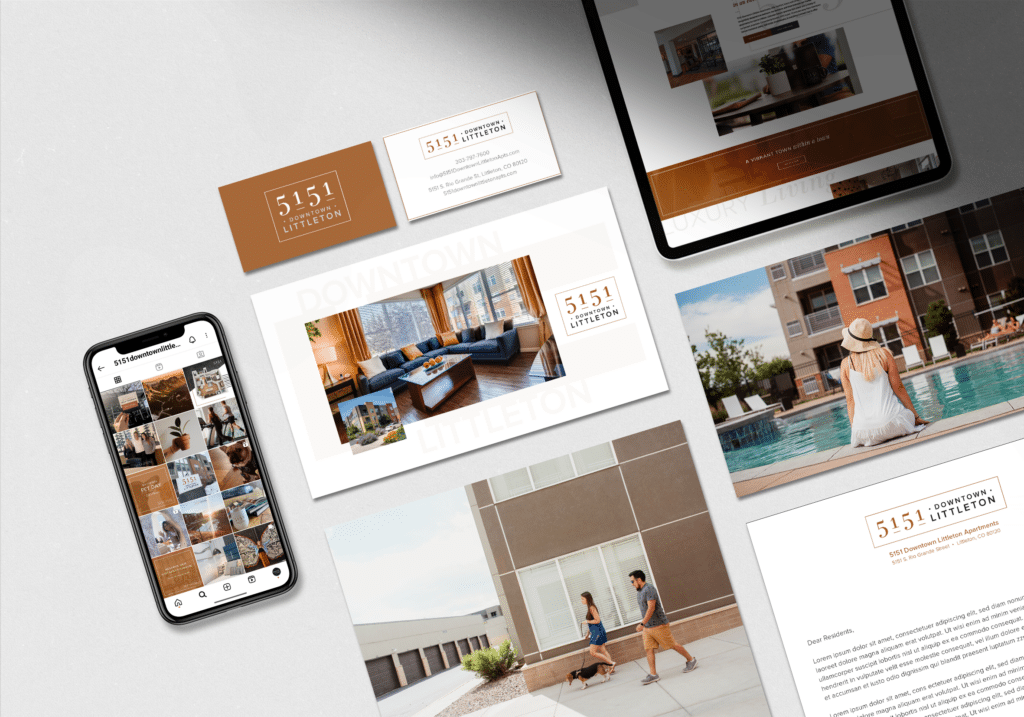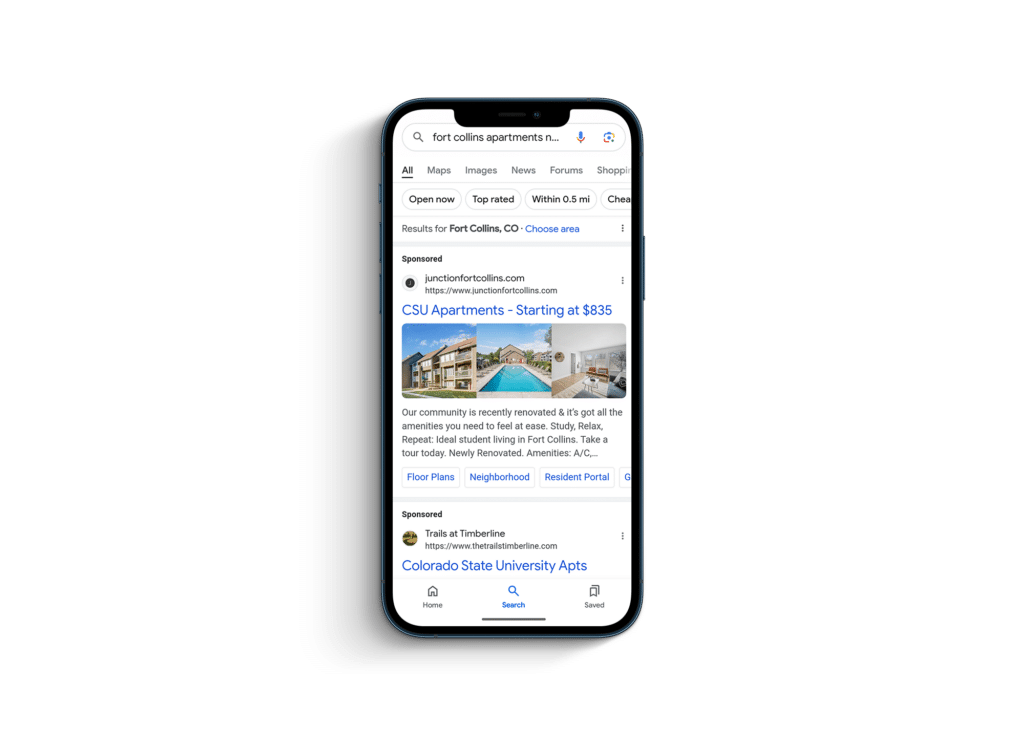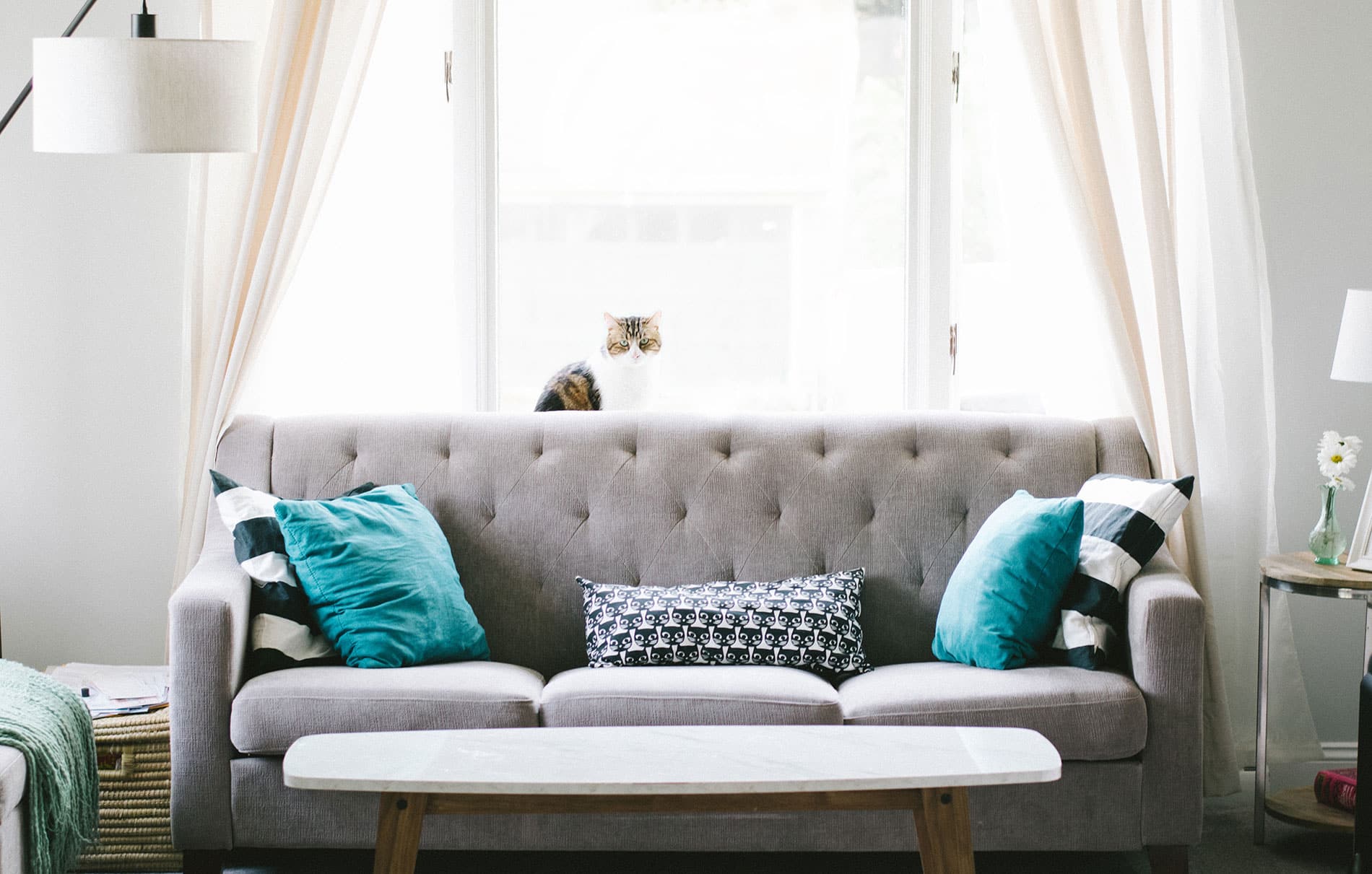Vacancies are an inevitable part of the renting market; however, while a few weeks of vacancy is unavoidable, you have to be careful not to let them turn into expensive and stressful problems that cost you thousands of dollars in missed rent.
Basically, every day an apartment unit sits empty is money down the drain – something you can’t afford to let that happen. Smart marketing is what separates property managers who quickly fill their units from those who struggle with long-term vacancies.
Gone are the days when you could stick a “For Rent” or “For Lease” sign out and wait for the phone to ring. The rental landscape has evolved, and so should your marketing strategy. You need to be aware of how to market apartments for rent and the steps to do so to really find great residents.
Why Marketing Matters
An empty apartment costs you money every single day. While most property managers understand this on a basic level, few truly grasp just how expensive vacancies can be. Beyond the obvious lost rent, the mortgage, utilities, maintenance, staffing, and property taxes on an empty unit that’s generating zero income.
Effective marketing is your best defense against these costly vacancies. When done right, strategic marketing doesn’t just fill your property faster – it attracts better residents who stay longer and take better care of your investment.
Moreover, the rental market has become increasingly competitive, with renters having more options than ever before. Your marketing approach can be what sets your property apart from the sea of similar listings. Professional photos, virtual tours, and compelling descriptions aren’t luxuries anymore – they’re necessities if you want to catch a prospect’s attention.
Perhaps most importantly, solid marketing gives you control. Instead of desperately accepting the first applicant who comes along, comprehensive marketing creates a pool of prospects, allowing you to select the best possible tenant for your property.
And that peace of mind? It’s worth every penny spent on marketing.

How To Advertise An Apartment For Rent: 6 Essential Steps
Step 1: Identifying Your Target Market
Before you snap a single photo or write a word of your listing, you need to get crystal clear on who you’re trying to attract. The days of “one-size-fits-all” marketing are long gone, especially in the rental world.
Start by looking at your property through a strategic lens. Is your apartment perfect for young professionals with its modern finishes and proximity to downtown? Or does it better suit families with its spacious bedrooms and nearby schools? Your property has natural strengths that appeal to specific renters – identifying these is marketing gold.
Dig into your neighborhood demographics. What’s the average age, income, and household size? Are there major employers nearby? Universities? Hospitals? These institutions create ready-made resident pools with predictable needs and timelines.
Don’t ignore untapped markets in your area. While everyone might be chasing young professionals, you could find success targeting remote workers who need home office space or empty nesters downsizing from larger homes. Sometimes, others overlook the most profitable niche.
Understanding generational differences is crucial. Millennials might prioritize smart home features and walkability scores, while Gen X renters might care more about square footage and storage space. Baby boomers often look for accessibility features and low-maintenance living.
Finally, do some real market research. Browse competing listings, attend open houses, and talk to local real estate agents. What types of renters are they attracting? What amenities are they highlighting? Your goal isn’t to copy them – it’s to identify gaps in the market that your property can fill.
Step 2: Prepare Your Property For Marketing
Once you know who you’re targeting, it’s time to get your property ready for its close-up. This goes way beyond a quick vacuum and dusting. How your property presents itself in those first photos can make or break your marketing efforts.
First, take a hard look at strategic upgrades. Not all improvements deliver equal returns. Fresh neutral paint and updated lighting fixtures often deliver massive visual impact for minimal investment. Meanwhile, that expensive kitchen remodel might not pay off in higher rent. Focus on the improvements your target tenants will actually notice and value.
Professional photography isn’t optional anymore—it’s essential. Poor-quality smartphone photos scream “amateur” and chase away quality tenants. If professional photography isn’t in your budget, at least invest in a good camera, use a tripod, shoot during daylight hours, and edit your photos. The difference is night and day.
Virtual tours have become expected, not exceptional. Even a simple walkthrough video shot on your phone helps prospects envision themselves in the space. For higher-end properties, consider 3D tours that let prospects control their viewing experience. These virtual options also help you screen prospects—those who view virtual tours are typically more serious about renting.
Staging doesn’t have to break the bank. Strategic furniture placement makes spaces look larger and helps renters visualize living there. If your property is vacant, consider minimal staging with rented furniture for photos or, at minimum, small touches like flowers on counters and towels in bathrooms.
Before marketing begins, conduct a thorough pre-marketing inspection. Fix those dripping faucets, squeaky doors, and chipped paint. Prospects notice these small flaws immediately, and they signal neglect—even if the property is otherwise well-maintained.
Don’t forget to document everything your property offers. That built-in wine rack, extra storage space, or south-facing balcony might seem minor to you but could be what sells a prospect on your property. Create a comprehensive list of features and amenities that your marketing can highlight.
You never get a second chance to make a first impression. The time and money invested in preparing your property properly will pay dividends in faster rentals and better tenants.
To learn more, check out our top tips for helping your apartment stand out.
Step 3: How to Make Successful Marketing Copy To Advertise an Apartment for Rent
The photos grab their attention, but your words seal the deal. Great marketing copy transforms an ordinary apartment into a compelling home in the prospect’s mind.
Start with headlines that stop scrollers in their tracks. Forget boring “2BR/2BA Available Now” headers. Try “Sun-Drenched Downtown Loft with Private Balcony” or “3 Bedroom with Renovated Kitchen Near Top Schools.” Your headline should instantly communicate your property’s biggest selling point.
When writing descriptions, tap into the psychology of home-hunting. People rent based on emotion and then justify with logic. Describe how morning light streams through kitchen windows, perfect for enjoying a coffee before work. Paint pictures of entertaining friends on the spacious deck or walk to nearby restaurants on summer evenings.
Create subtle urgency without sounding desperate. Phrases like “recently updated and won’t last long” or “one of the few units available in this sought-after building” encourage prospects to act quickly without the cheesy “ACT NOW!” approach.
Every property has unique selling points—even if they’re not obvious. Maybe you’re not in the trendiest neighborhood, but you offer the best value per square foot. Perhaps you lack a pool, but have the largest private balconies in the area. Identify and highlight what makes your rental stand out.
Tell the neighborhood story. Today’s renters aren’t just choosing four walls—they’re choosing a lifestyle. Mention the charming coffee shop around the corner, the nearby hiking trail, or the farmers market every Saturday. Help prospects see themselves living there, not just renting there.
Be thoughtful about legal considerations. Avoid discriminatory language, even unintentionally. Phrases like “perfect for young professionals” or “ideal for couples” could violate fair housing laws. Instead, focus on property features rather than who should live there.
It’s also worth creating templates for different platforms. Your Zillow listing might be comprehensive, while your Craigslist ad needs to be punchier. Social media requires even more concise, attention-grabbing copy. Adapt your message to fit each channel while maintaining a consistent property story. Check out this to learn more about social media marketing for apartments.
Good copy doesn’t just describe a property—it tells a story about the life your prospect could live there. That’s what converts scrollers into scheduled viewings.

Step 4: Advertise Online
Most of your prospective residents will find you online. But slapping up a listing on Zillow or Apartments.com and calling it a day won’t cut it anymore.
Start by covering the obvious bases — while the major ILSs such as Zillow, Apartments.com, and Realtor.com remain rental search powerhouses, don’t stop thereLook at launching Google Ads, Meta ads,and listing on Facebook Marketplace, which has quietly become a rental search giant, especially for younger renters. PadMapper, HotPads, and Apartment List can also put your property in front of different audiences.
Social media marketing delivers serious bang for your buck. Create a simple property showcase on Instagram with your best photos and quick virtual tours. Consider a dedicated Facebook post that your network can share—personal connections often lead to the best tenants. For higher-end properties, Pinterest can showcase your property’s design elements to style-conscious renters.
Don’t overlook Google Business profiles. They’re free, take minutes to set up, and make your property appear in local searches and maps. Add your best photos, virtual tours, and keep the listing updated with correct contact information.
Local Facebook groups are marketing gold mines. Many neighborhoods have “Looking for housing in [Area]” groups where you can list your property directly to people specifically wanting to live there. Just be sure to follow each group’s posting rules.
Email marketing remains surprisingly effective, especially if you’ve built a prospect list over time. Create a simple template announcing new availability that you can quickly customize and send to people who’ve expressed interest in your properties previously.
Paid advertising requires a more strategic approach. Facebook and Instagram ads allow incredible targeting precision—you can literally show your ad to people within a certain income bracket who’ve recently searched for apartments in your area. Google Ads can capture prospects actively searching for rentals with terms like “apartments near downtown.”
Finally, don’t forget basic search engine optimization. Use neighborhood names and specific amenities in your listing titles and descriptions. The more specific your listing language, the more likely you’ll appear in targeted searches like “pet-friendly two-bedroom with in-unit laundry in Highland Park.”
Find out top SEO tips for marketing for apartments that will make online advertising easier.
Step 5: Don’t Forget Traditional Advertising
Don’t make the mistake of thinking traditional advertising is dead. While online marketing dominates, strategic offline approaches can still deliver excellent results—sometimes reaching prospects your digital efforts miss entirely.
Let’s start with yard signs. Yes, they’re old school, but they’re far from obsolete. The key is modernizing them. Instead of just a phone number, add a QR code that takes prospects directly to your virtual tour or application. Consider short, memorable URLs like “flatsfortcollins.com” that people driving by can easily remember. And invest in quality signage—those flimsy wire-frame signs scream “amateur property.”
Local businesses can be powerful allies in your marketing efforts. Build relationships with HR departments at major employers, who often help relocating employees find housing. Leave professional flyers (not just business cards) at coffee shops, gyms, and grocery stores in your target area. Some businesses will even promote quality rentals to their employees as a perk.
Community bulletin boards still exist, both physical and digital. Many neighborhoods have dedicated websites and newsletters where you can list rentals. Local libraries, community centers, and houses of worship often have bulletin boards where rental listings are welcome. These grassroots approaches often attract stable, community-oriented tenants.
Print media isn’t entirely dead either. While newspaper classifieds have lost their punch, specialty publications still work in certain markets. Local magazines targeted to newcomers, university papers for student housing, and industry publications for corporate rentals can all hit specific target audiences effectively.
Perhaps the most powerful traditional marketing method is creating a solid referral network. Connect with local real estate agents who don’t handle rentals but encounter people who need them. Develop relationships with property managers who might have overflow prospects. Incentivize current residents to refer quality prospects with rent discounts or gift cards.
The beauty of traditional advertising is that while everyone else has rushed online, these channels have become less crowded. Sometimes, the “old ways” can be your secret weapon in a competitive rental market.
Step 6: Converting Prospects to Residents
All your apartment market efforts come down to this critical phase—turning interested prospects into signed leases. This is where many landlords drop the ball, losing qualified tenants after doing everything else right.
First, create a seamless viewing experience. Be meticulously prepared for showings—lights on, temperature comfortable, soft music playing, and fresh scent in the air. Arrive early to ensure everything is perfect. Remember, you’re not just showing an apartment; you’re selling a lifestyle. During COVID, many property managers developed self-showing protocols with lockboxes and detailed instructions—consider keeping these options for busy professionals who appreciate flexibility.
The follow-up process makes or breaks your conversion rate. Respond to all inquiries within hours, not days. After showings, send a personalized message thanking prospects for their time and addressing any specific questions they raised during the viewing. This simple step puts you miles ahead of most landlords.
Learn to handle objections professionally. When a prospect says, “The kitchen is smaller than I hoped,” be ready with, “Yes, but notice how efficiently it’s designed with these pull-out organizers and extra cabinet space.” Have responses prepared for common concerns about the property, neighborhood, or lease terms.
Streamline your application process. Today’s renters expect convenience—complicated paper applications or clunky systems will lose your prospects. Invest in digital application platforms that allow prospects to apply from their phones immediately after viewing. Make sure application fees are reasonable and the process is transparent.
Remember, the conversion phase is where your professionalism shines through. Prospects are not just evaluating your property—they’re considering you as a landlord. A smooth, responsive, and professional process often becomes the deciding factor when prospects are considering multiple properties.
How To Market Apartments for Rent With Brindle Digital Marketing

Marketing rental properties isn’t easy. There’s a lot to stay on top of, from trends to digital campaigns. Fortunately, you don’t have to navigate these challenges alone. Brindle Digital Marketing specializes in rental property marketing, helping you attract qualified tenants faster while reducing vacancy periods. Our team understands the unique challenges of apartment marketing and creates customized strategies that deliver measurable results.
We can help with many services, including:
- Website Design & Development: Creating custom and template-based websites that are visually appealing, user-friendly, and optimized for lead generation.
- Branding & Design: Developing brand identities, including logo design, brand strategy, and cohesive visual elements to establish a strong market presence.
- Social Media Marketing & Management: Crafting and executing social media strategies to engage audiences, build community, and enhance online visibility.
- Paid Advertising: Managing paid campaigns across platforms like Google Ads and social media to drive targeted traffic and increase conversions.
- Search Engine Optimization (SEO): Optimizing websites to improve search engine rankings, attract organic traffic, and enhance online discoverability.
- Reputation Management: Assisting clients in monitoring and responding to online reviews to maintain a positive brand image.
Don’t let your rental property sit vacant while you struggle with ineffective marketing tactics. Partner with Brindle Digital Marketing today and transform your approach to apartment advertising. Contact us to discover how we can help you achieve consistent rental success with marketing strategies tailored to your specific property and goals.
Conclusion – How to Market Apartments for Rent
Marketing your rental property effectively doesn’t need to be overwhelming. By identifying your target market, preparing your property properly, crafting compelling copy, and implementing both digital and traditional advertising strategies, you can significantly reduce vacancy periods and attract quality tenants.
Start implementing these strategies today, track what works best for your specific property, and adjust accordingly. Your investment deserves the best possible marketing—and now you have the tools to deliver it.
FAQs
What is the best way to advertise an apartment?
The most effective approach combines high-quality photos with compelling descriptions on popular rental platforms like Google Ads, Zillow, and Facebook Marketplace.
How to market an apartment building?
Focus on highlighting the building’s unique amenities and community atmosphere through professional photography and virtual tours. Create a consistent brand identity for the building that showcases its lifestyle benefits and neighborhood advantages.
How to generate apartment traffic?
Generate more traffic by ensuring your listings appear on multiple platforms, creating urgency with limited-time incentives, leveraging social media ads with geographic targeting, and encouraging referrals from current tenants through an incentive program.
Where do most property managers post rentals?
Most apartment marketers and property managers post rentals on major platforms like Zillow, Apartments.com, and Realtor.com while also utilizing Google Ads, Meta Ads, Facebook Marketplace, Craigslist, and local community groups for additional exposure.
